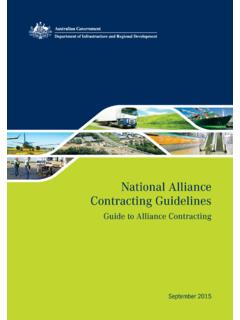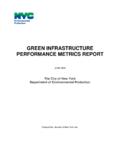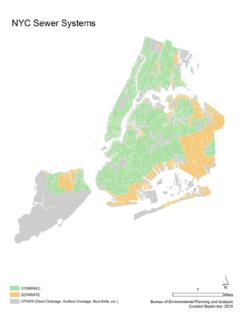Transcription of National Public Private Partnership
1 National Public Private PartnershipPolicy FrameworkOctober 2015 National Public Private PartnershipPolicy FrameworkOctober 2015 Components of the Guidelines National PPP Policy FrameworkNational PPP Guidelines OverviewNational PPP Detailed Guidance MaterialVolume 1: Procurement Options AnalysisVolume 2: Practitioners GuideVolume 3: Commercial Principles for Social InfrastructureVolume 4: Public Sector Comparator GuidanceVolume 5: Discount Rate Methodology GuidanceVolume 6: Jurisdictional RequirementsVolume 7: Commercial Principles for Economic InfrastructureRoadmap for applying the Commercial PrinciplesDocument UpdatesThis Policy will be updated from time to time to reflect evolving best practices and lessons controlLast updatedUpdated sections1 December 2008 Original publication2 October 2015 New content throughout to reflect updated practice and Productivity Commission recommendations Commonwealth of Australia 2016 ISBN 978-1-925401-16-5 February 2016/INFRA2763 Ownership of intellectual property rights in this publicationUnless otherwise noted, copyright (and any other intellectual property rights, if any) in this publication is owned by the Commonwealth of Australia (referred to below as the Commonwealth).
2 Disclaimer The material contained in this publication is made available on the understanding that the Commonwealth is not providing professional advice, and that users exercise their own skill and care with respect to its use, and seek independent advice if necessary. The Commonwealth makes no representations or warranties as to the contents or accuracy of the information contained in this publication. To the extent permitted by law, the Commonwealth disclaims liability to any person or organisation in respect of anything done, or omitted to be done, in reliance upon information contained in this Commons licenceWith the exception of (a) the Coat of Arms; (b) the Department of Infrastructure and Regional Development s photos and graphics, copyright in this publication is licensed under a Creative Commons Attribution Australia Commons Attribution Australia Licence is a standard form licence agreement that allows you to copy, communicate and adapt this publication provided that you attribute the work to the Commonwealth and abide by the other licence terms.
3 A summary of the licence terms is available from The full licence terms are available from This publication should be attributed in the following way: Commonwealth of Australia 2016, National Public Private Partnership Policy of the Coat of ArmsThe Department of the Prime Minister and Cabinet sets the terms under which the Coat of Arms is used. Please refer to the Department s Commonwealth Coat of Arms and Government Branding web page and in particular, the Commonwealth Coat of Arms Information and Guidelines usThis publication is available in PDF format. All other rights are reserved, including in relation to any Departmental logos or trade marks which may exist. For enquiries regarding the licence and any use of this publication, please contact:Director - Publishing and Communications, Communications Branch Department of Infrastructure and Regional Development GPO Box 594, Canberra ACT 2601 Australia Email: Website: PPP Guidelines Policy Framework 3 1 Our commitment The Australian, State and Territory Governments are committed to Public infrastructure being well planned and effectively delivered.
4 A Public Private Partnership (PPP) is a proven infrastructure procurement method that in the appropriate circumstances can make the best use of the resources of both the Public and Private sectors. The National PPP Policy and Practitioners Guidelines 2015 have been refreshed to incorporate current practice and address the infrastructure procurement recommendations of the Productivity Commission Inquiry into Public Infrastructurei. A key factor in successful procurement of infrastructure and associated services is that it is preceded by an integrated approach to strategic infrastructure planning and robust frameworks for decisions to invest in infrastructure, including the use of project evaluation methodologies such as rigorous cost benefit analysis. The changes to the National PPP Policy and Guidelines focus on assessing modified financing options, improving procurement, maintaining and optimising effective risk allocation, and ensuring effective monitoring of long-term performance based contracts.
5 The aim of a PPP is to deliver improved services and better value for money, primarily through appropriate risk transfer, encouraging innovation, greater asset utilisation and integrated whole-of-life management, underpinned by Private financing. PPPs using Private finance are one way to meet the challenge of procuring productive infrastructure. There is an important distinction between infrastructure funding and finance. Projects are funded by government or directly by users and are financed either through Public and/or Private borrowings. Modified PPP financing strategies can be incorporated into PPP procurement to reflect market conditions and optimise the value for money in a PPP structure. The choice between Public and Private provision of infrastructure will be based on a rigorous value for money assessment as part of a procurement strategy.
6 Where it is determined that Private sector provision of Public infrastructure and related services will deliver better value for money, the choice of contractors will generally be through a consistent, transparent system of competitive tendering, noting that all jurisdictions also entertain proposals for exclusive mandates where that is judged to deliver value for money ( unsolicited proposals or market-led proposals). Achieving value for money is a key requirement of government and is a combination of the service outcome to be delivered by the Private sector, together with the degree of risk transfer and financial implications for government. Value for money is the driver for adopting the PPP approach, rather than capital scarcity or the balance sheet treatment. Value for money must also be demonstrated over the full lifecycle of the PPP contract.
7 Sustainable long-term contracting also means a PPP needs to be able to respond to change (services or capital) efficiently and effectively. Active management of contract performance frameworks is critical in ensuring quality service delivery. Effectively managing long-term PPP investments requires a sustainable Partnership approach between the Public and Private sectors. In all investment evaluation decisions and subsequent project procurement decisions, governments will consider the potential impact on Public interest matters such as privacy, accountability, health and safety, consumer rights, Public access and equity. Each jurisdiction will have its own methods for considering Public interest matters. National PPP Guidelines Policy Framework 4 Innovation in PPP models will be encouraged. It is important that the processes for delivering a PPP project be able to evolve to reflect experience and the changing environments in which infrastructure is constructed and financed and in which services are delivered.
8 With the assistance of Infrastructure Australia, the Australian, State and Territory Governments will monitor, review and from time to time refine the National PPP Policy and Guidelines. National PPP Guidelines Policy Framework 5 2 Objectives Objectives This National PPP Policy (Policy) provides a consistent framework that enables Public and Private sectors to work together to improve Public service delivery through Private sector provision of Public infrastructure and related services. The objectives of the National PPP Policy Framework are to: encourage Private sector investment in Public infrastructure and related services where value for money for government can be clearly demonstrated; encourage innovation in the provision of infrastructure and related service delivery; ensure rigorous governance over the selection of projects for PPPs and the competition for and awarding of contracts; facilitate a consistent and streamlined approach to procuring PPPs across Australia; be sufficiently flexible to respond to strategic priorities, project specific requirements and market conditions; and clearly articulate and measure accountability for risk and outcomes adopting a Partnership approach to managing long-term PPP contracts.
9 National PPP Guidelines Policy Framework 6 3 Scope and application Scope of the National PPP Policy The Policy requires jurisdictions to apply the National PPP Guidelines to the procurement of PPP projects, which are defined as being where: the Private sector provides Public infrastructure and any related services; and there is Private investment or financing. PPPs as a procurement method are part of a broader spectrum of contractual relationships between the Public and Private sectors to produce an asset and/or deliver a service. They are distinct from early contractor involvement, alliancing, managing contractor, traditional procurement (design & construct) and other procurement methods. This policy covers PPPs only. Other types of procurement are covered by other government guidelines. Compared with other infrastructure delivery methods that are focused on design and construction, PPPs are typically complex given their lengthy contract periods involving long-term obligations and a sharing of risks and rewards between the Private and Public sectors.
10 The policy does not apply to the Private provision of services for which there is no Public infrastructure element ( professional consulting services), nor does it apply to Private investment in infrastructure across Australia where government does not have a direct interest in the provision of Public services ( a gas pipeline between states, or roads built from a mine to a port). Public infrastructure For the purposes of this PPP policy, the term Public infrastructure refers to physical assets and related services. Physical assets cover (but are not limited to) economic infrastructure such as roads, rail, ports, water treatment, communications and social infrastructure such as correctional facilities, health care facilities, educational facilities, convention or recreational facilities, accommodation facilities, Public housing facilities, and court facilities.







